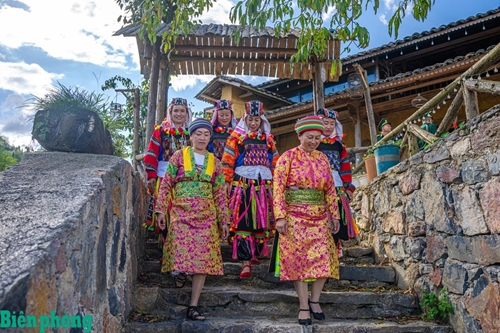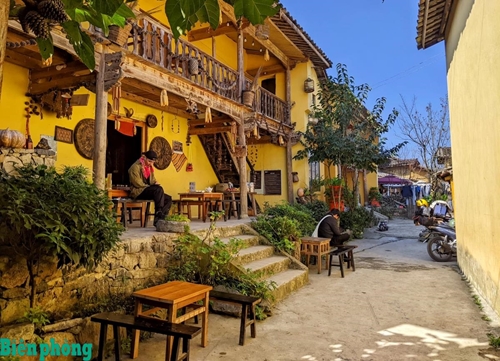Beyond the scenery, something even more powerful is taking root. Many H’mong, Dao, Tay, and other ethnic minority families are leveraging their cultural heritage to develop tourism, earning stable incomes and building better lives from the very traditions they once feared would vanish.
Awakening karst plateau
Long dubbed “the place where even rocks bloom,” Dong Van is now flourishing, not with flowers, but with tourism and hope for prosperity. Just a decade ago, the region was defined by a harsh climate, remote cliffside villages, and limited farming opportunities. Life revolved around corn, livestock, and government support.
Things began to change after Dong Van was designated a UNESCO Global Geopark. Tourism took root, drawing growing numbers of visitors to villages like Sang Tung, Pho Bang, Lung Tao, Lung Cu, and the ancient town of Dong Van. Today, locals are no longer passive observers; they’ve become hosts, storytellers, tour guides, chefs, and artisans. Crucially, they are not performing their culture. They are living it. That authenticity is what captivates travelers and keeps them coming back.
    |
 |
|
People of ethnic minority communities in Dong Van preserving traditional culture and developing economy (Photo: bienphong.com.vn) |
Giang Mi Vu, who runs a homestay in Sa Phin Commune, explains, “Tourists don’t come just to see the scenery. They want to eat our food, stay in our homes, and live like we do. That interest has opened a new path for us, starting from our traditional houses, our fields, even the clothes we once wore only during New Year’s festivals.”
In Lo Lo Chai village, near the iconic Lung Cu Flagpole, centuries-old homes have been lovingly converted into homestays. There’s no need for new buildings or flashy renovations, just a few mattresses, clean bathrooms, and traditional meals are enough to charm guests.
Locals also offer cultural experiences such as H’mong khen (panpipe) performances, embroidery workshops, cooking thang co (horse meat soup), and making sticky rice cakes. These activities now provide a stable, year-round source of income.
According to Dong Van District authorities, nearly 200 households are engaged in community-based tourism, with annual incomes ranging from VND 70 million to 150 million, figures that were once unimaginable in the region.
Culture key to sustainable tourism
Dong Van’s greatest achievement lies in realizing that tourism doesn’t require modern infrastructure or diluted traditions. On the contrary, the more authentic the experience, the more compelling it becomes.
In Sa Phin, made famous by the film The Story of Pao, Mua Thi Chia, a H’mong woman, transformed her 100-year-old ancestral home into a homestay and a workshop for traditional flax weaving and brocade embroidery. Each year, she welcomes more than 2,000 visitors and provides jobs for nearly a dozen local women.
“Tourists want to experience our culture. They want to dye cloth with indigo, cook with us, and see how our clothes are made. Thanks to that, many traditional crafts, flax weaving, khen making, embroidery, are being revived,” she said.
Other villages such as Lung Cu, Khau Vai, and Pho Bang are also working to preserve cultural spaces, revive traditional festivals, and connect craft production with tourism. These distinctive elements set Dong Van apart from generic mass-tourism models.
This transformation has been fueled by targeted support from local authorities. From organizing hospitality workshops and offering home renovation loans to promoting events like the Buckwheat Flower Festival, the Khau Vai Love Market, and National Hmong Culture Day, the local government has played a crucial role in bringing Dong Van into the spotlight.
With 18 ethnic groups, Dong Van is a mosaic of ancient cultural values, rich history, and awe-inspiring landscapes. But both officials and residents understand that without cultural roots, tourism cannot thrive.
    |
 |
|
Homestays in Lo Lo Chai attractive to tourists |
Sustainable tourism here is not just an opportunity. It’s a responsibility. By drawing from its heritage, Dong Van is diversifying its tourism offerings, preserving its identity, creating new livelihoods, and fostering a deep sense of pride and stewardship.
From a landscape once defined by stone and mist, Dong Van is now blossoming. Tourism is not only generating income but also reviving cultural pride, raising environmental awareness, and nurturing a shared vision for prosperity.
Translated by Tran Hoai